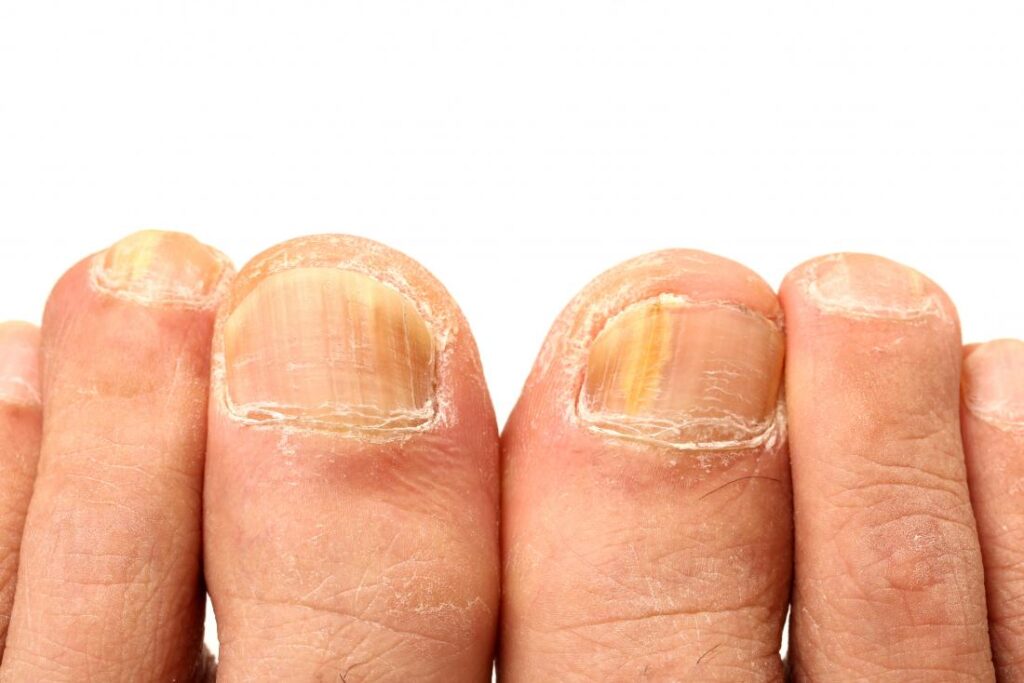Cutaneous candidiasis is a fungal infection of the skin caused predominantly by Candida albicans, a yeast-like fungus that is part of the normal flora of the human body. While typically harmless, under certain conditions, Candida can proliferate excessively, leading to infection. This condition commonly affects warm, moist, and creased areas of the skin, such as the armpits, groin, under the breasts, and between the fingers and toes.

Etiology and Risk Factors
The overgrowth of Candida on the skin can be attributed to various factors that disrupt the natural balance of microorganisms. Key risk factors include:
- Moisture and Heat: Environments that are warm and moist promote fungal growth. Individuals residing in humid climates or engaging in activities that cause excessive sweating are more susceptible.
- Immunosuppression: Conditions that weaken the immune system, such as HIV/AIDS, diabetes mellitus, or the use of immunosuppressive medications, increase vulnerability to infections.
- Antibiotic Use: Prolonged or broad-spectrum antibiotic therapy can disrupt normal bacterial flora, reducing competition for Candida and facilitating its overgrowth.
- Obesity: Excess body weight leads to more skin folds, creating ideal conditions for fungal proliferation due to increased moisture and friction.
- Poor Hygiene: Infrequent washing or inadequate drying of the skin can create conditions conducive to fungal growth.
Clinical Manifestations
Cutaneous candidiasis presents with distinctive clinical features, which may vary depending on the affected area. Common manifestations include:
- Erythematous Patches: Well-demarcated, red patches that may exhibit a moist, glazed appearance.
- Satellite Lesions: Small pustules or papules located near the primary infected area.
- Maceration: Softening and breaking down of the skin, particularly in intertriginous zones where skin surfaces rub together.
- Pruritus and Discomfort: Intense itching and a burning sensation are commonly reported.
In infants, candidiasis often manifests as diaper dermatitis, characterized by a bright red rash in the diaper area, sometimes accompanied by satellite lesions.
Diagnostic Approach
Diagnosis is primarily clinical, based on the characteristic appearance of lesions and patient history. To confirm the diagnosis and rule out other dermatological conditions, the following methods may be employed:
- Microscopic Examination: Skin scrapings from the affected area can be treated with potassium hydroxide (KOH) and examined under a microscope to identify fungal elements.
- Culture: Culturing the organism can help in identifying the specific Candida species and in determining antifungal susceptibility, which is particularly useful in recurrent or refractory cases.
Therapeutic Strategies
Effective management of cutaneous candidiasis involves both pharmacological treatment and the implementation of preventive measures to reduce recurrence.
Pharmacological Treatment
- Topical Antifungals: First-line treatment typically involves the application of topical antifungal agents. Commonly used medications include clotrimazole, miconazole, and nystatin. These are applied to the affected area twice daily for a duration of two to four weeks, depending on the severity and response to treatment.
- Systemic Antifungals: In cases where topical treatment is ineffective or the infection is extensive, systemic antifungal therapy may be warranted. Oral fluconazole is commonly prescribed, with the dosage and duration tailored to the individual patient’s needs.
Preventive Measures
- Hygiene Practices: Maintaining proper skin hygiene is crucial. Regular washing with mild soap and thorough drying, especially in skin folds, can prevent moisture accumulation.
- Clothing Choices: Wearing loose-fitting, breathable clothing made of natural fibers like cotton can help reduce moisture buildup.
- Weight Management: For individuals with obesity, weight loss can reduce skin folds and associated moisture, thereby decreasing the risk of infection.
- Blood Sugar Control: In diabetic patients, maintaining optimal blood glucose levels is essential, as hyperglycemia can predispose to fungal infections.
Complications and Prognosis
While cutaneous candidiasis is generally manageable, if left untreated, it can lead to complications such as:
- Chronicity: Persistent infection can result in chronic skin changes and discomfort.
- Secondary Bacterial Infections: Damaged skin barriers may become susceptible to bacterial superinfection.
With appropriate treatment and preventive measures, the prognosis is favorable, and most individuals experience complete resolution of symptoms.
